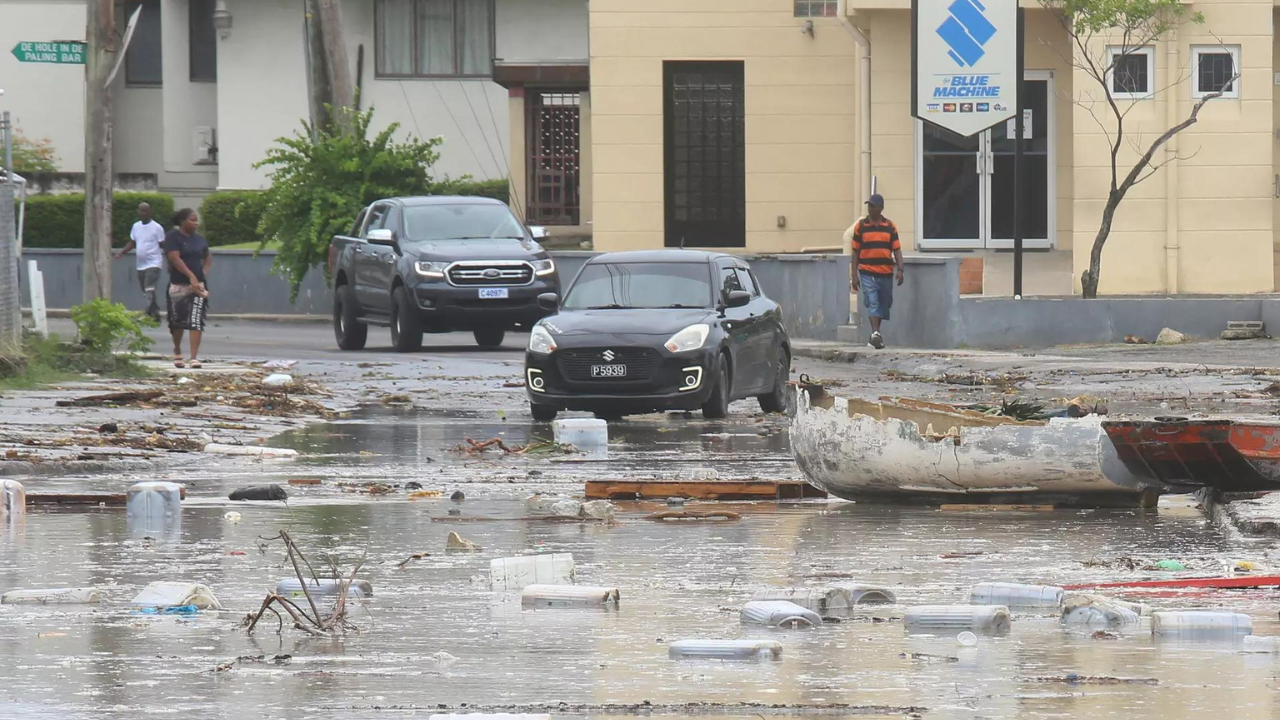NEW DELHI: Hurricane Beryl on Monday wrecked havoc in southeastern Caribbean as the strong winds and rains rampaged homes by ripping off doors, windows, and roofs. The category 4 storm, fueled by record warm waters, made landfall on the island of Carriacou as the earliest storm of its strength to form in the Atlantic.
According to NBC Radio, one death was reported on the island of Bequia, along with extensive damage to infrastructure and farmland throughout St.Vincent and the Grenadines. Communications remained largely down across the region, with streets from St. Lucia to Grenada strewn with debris scattered by winds up to 150 mph.
“Right now, I’m real heartbroken,” said Vichelle Clark King as she surveyed her damaged shop in the Barbadian capital of Bridgetown that was filled with sand and water.
The storm was expected to move south of Jamaica and toward Mexico’s Yucatan peninsula by late Thursday as a Category 1 storm. The last strong hurricane to hit the southeast Caribbean was Hurricane Ivan 20 years ago, which caused numerous fatalities in Grenada.
In Grenada, officials received reports of devastation from Carriacou and surrounding islands, with Prime Minister Dickon Mitchell planning to travel to the affected areas once it was safe. The hospital roof in Grenada was damaged, forcing the evacuation of patients to a lower floor.
Forecasters had warned of a life-threatening storm surge of up to 9 feet in areas where Beryl made landfall, along with heavy rainfall for Barbados and nearby islands, especially in Grenada and the Grenadines.
“Beryl is expected to remain an extremely dangerous major hurricane as its moves over the eastern Caribbean,” the National Hurricane Center told CBS news.
Beryl’s rapid intensification from a tropical depression to a major hurricane in just 42 hours was a rare occurrence, with only six other instances in Atlantic hurricane history. It also set a record as the earliest Category 4 Atlantic hurricane, surpassing Hurricane Dennis in 2005.
The storm’s strength was attributed to record warm waters, which were hotter than they would typically be at the peak of hurricane season in September.
Thousands of travelers, including Jaswinderpal Parmar of Fresno, California, were stranded in Barbados due to flight cancellations caused by the hurricane.
As Beryl moved through the southeast Caribbean, government officials also warned about a separate cluster of thunderstorms following a similar path, with a 70% chance of becoming a tropical depression, CBS news reported.
Beryl is the second named storm in the Atlantic hurricane season, which runs from June 1 to Nov. 30. The National Oceanic and Atmospheric Administration predicts an above-average season, with between 17 and 25 named storms, up to 13 hurricanes, and four major hurricanes. An average Atlantic hurricane season produces 14 named storms, seven hurricanes, and three major hurricanes.
According to NBC Radio, one death was reported on the island of Bequia, along with extensive damage to infrastructure and farmland throughout St.Vincent and the Grenadines. Communications remained largely down across the region, with streets from St. Lucia to Grenada strewn with debris scattered by winds up to 150 mph.
“Right now, I’m real heartbroken,” said Vichelle Clark King as she surveyed her damaged shop in the Barbadian capital of Bridgetown that was filled with sand and water.
The storm was expected to move south of Jamaica and toward Mexico’s Yucatan peninsula by late Thursday as a Category 1 storm. The last strong hurricane to hit the southeast Caribbean was Hurricane Ivan 20 years ago, which caused numerous fatalities in Grenada.
In Grenada, officials received reports of devastation from Carriacou and surrounding islands, with Prime Minister Dickon Mitchell planning to travel to the affected areas once it was safe. The hospital roof in Grenada was damaged, forcing the evacuation of patients to a lower floor.
Forecasters had warned of a life-threatening storm surge of up to 9 feet in areas where Beryl made landfall, along with heavy rainfall for Barbados and nearby islands, especially in Grenada and the Grenadines.
“Beryl is expected to remain an extremely dangerous major hurricane as its moves over the eastern Caribbean,” the National Hurricane Center told CBS news.
Beryl’s rapid intensification from a tropical depression to a major hurricane in just 42 hours was a rare occurrence, with only six other instances in Atlantic hurricane history. It also set a record as the earliest Category 4 Atlantic hurricane, surpassing Hurricane Dennis in 2005.
The storm’s strength was attributed to record warm waters, which were hotter than they would typically be at the peak of hurricane season in September.
Thousands of travelers, including Jaswinderpal Parmar of Fresno, California, were stranded in Barbados due to flight cancellations caused by the hurricane.
As Beryl moved through the southeast Caribbean, government officials also warned about a separate cluster of thunderstorms following a similar path, with a 70% chance of becoming a tropical depression, CBS news reported.
Beryl is the second named storm in the Atlantic hurricane season, which runs from June 1 to Nov. 30. The National Oceanic and Atmospheric Administration predicts an above-average season, with between 17 and 25 named storms, up to 13 hurricanes, and four major hurricanes. An average Atlantic hurricane season produces 14 named storms, seven hurricanes, and three major hurricanes.






